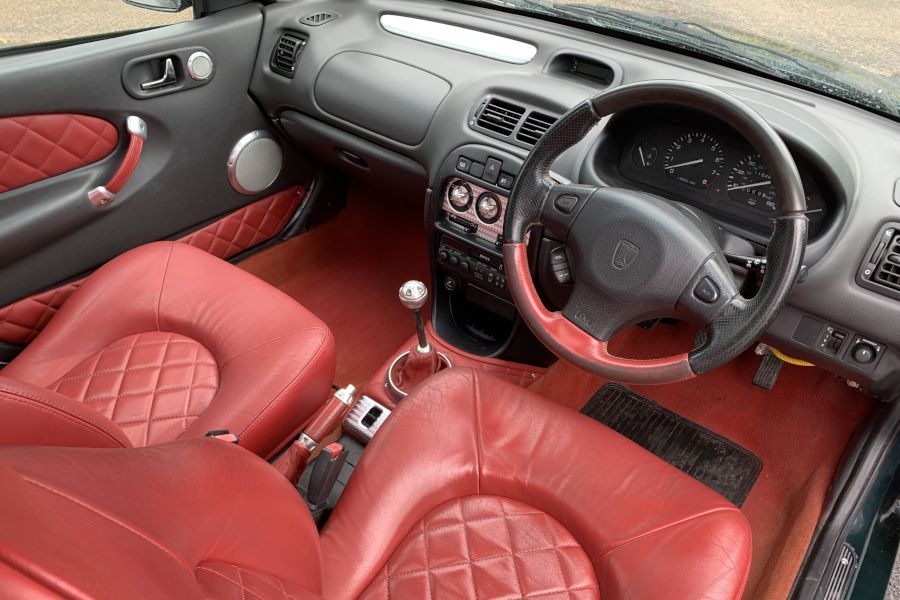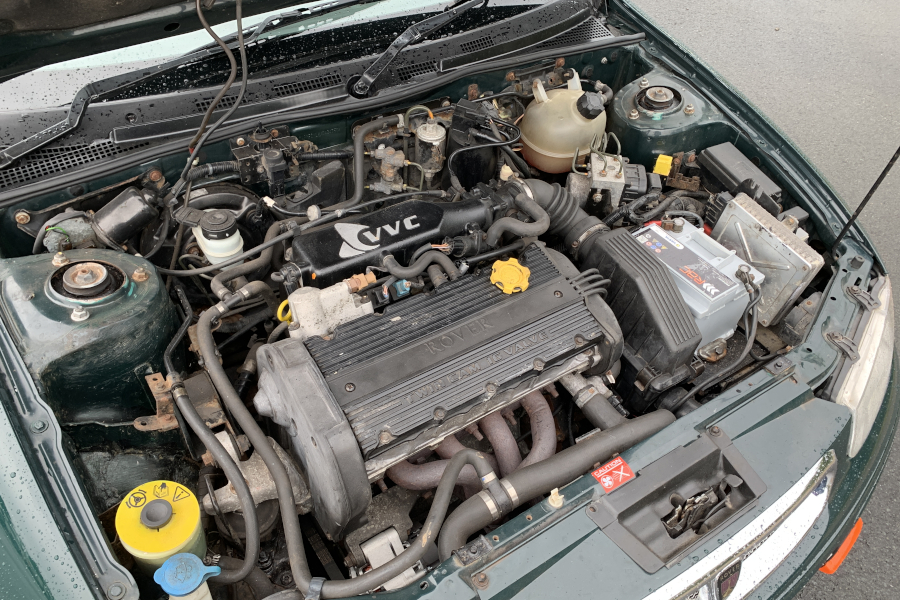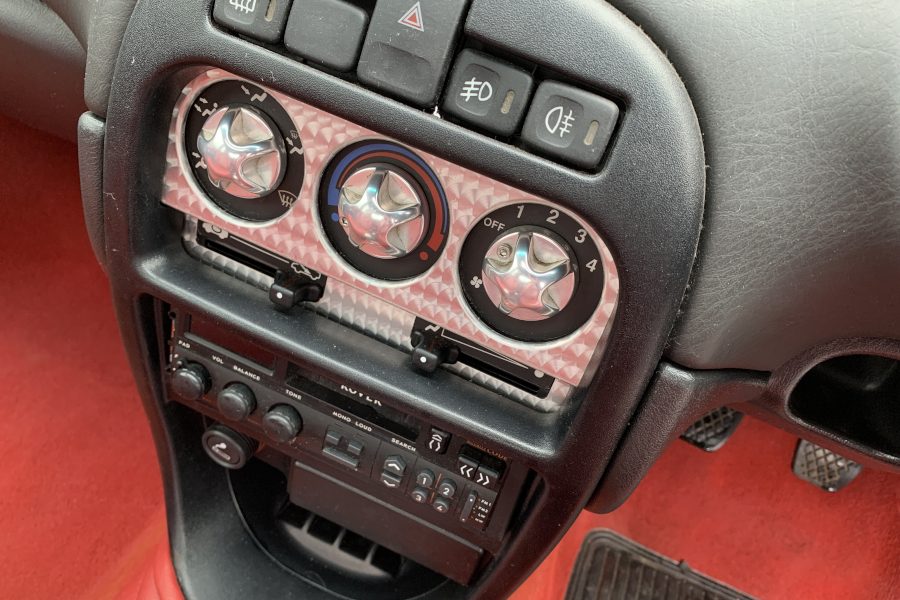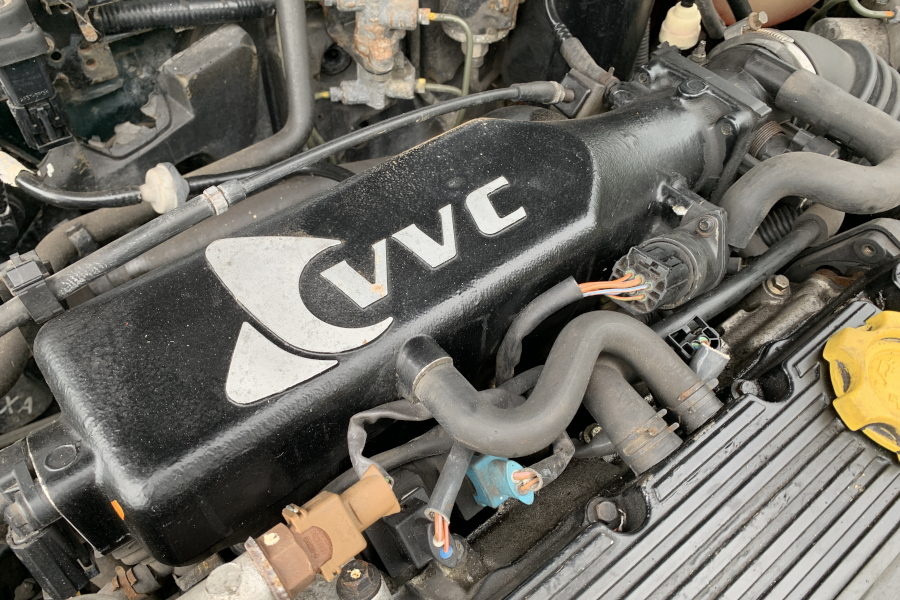We sample a forgotten hot-hatch gem inspired by 1950s Grand Prix racers and built under BMW ownership – the Rover 200 BRM
Images: Paul Wager
The BMW era at Rover saw the brand lean increasingly on its heritage, the ultimate evolution of the stylised Bavarian ideal of British style being the chintzy Rover 75. Along the way though, a few highlights slipped under the radar which proved the development engineers were still very much active – and one of them was the Rover 200 BRM limited edition.
If you’ve not heard of it then you can be forgiven, since it’s one of the rarest of all the modern Rovers, but think Clio Williams or Civic Jordan and you’re half way there. Except that in the case of the Rover, the GP team from which it took inspiration had already been dormant for over 20 years.
The association between the illustrious British Racing Motors – famed for its V16 engine – and Rover, went back to the 1960s when BRM had assisted in preparing a Rover gas turbine-powered car for Le Mans and when a hotted-up Rover 200 was proposed in the mid 1990s, it seemed like a good name to lean on. The then owner of the name, Rubery Owen (of Rostyle wheel fame) agreed to a five-year deal and the scene was set.
The style both inside and out was clearly influenced by the BRM connection, most obviously in the bright orange nosecone which had been a signature style of the team’s Grand Prix cars in the 1950s, before the advent of sponsorship.
The 1950s racer theme continued on the inside which was lavishly trimmed in diamond-stitched red leather, with milled aluminium heater controls and other touches livening up the normally anonymous Honda-derived cabin.
The end result was something which looked like no other Rover before or since, but in many ways the red leather and orange nosecone were the car’s undoing. Certainly road testers tended to concentrate on the cosmetics and ignore the driving qualities of the car, which were recognised by the few who did bother as excellent to the point of being class-leading.
The starting point was the 200vi which is a model consigned to the back burner of automotive history but which was an appealing hot hatch package, combining the Rover 200’s capable chassis with the 143bhp variable valve-timed ‘VVC’ K-Series as found in the MGF.
For its BRM incarnation, the already capable 200vi received 20mm lower suspension with stiffer springs and revised dampers, plus perhaps the most significant upgrade in the shape of a Torsen limited slip differential. The BRM also received a close-ratio gearbox with revised final drive ratio and an uprated brake master cylinder.

The project was intended as a limited edition of just 500 but in the end a total of 1109 were produced, the majority sold in the UK and curiously, the second most successful export market being Spain.
They didn’t exactly fly out of the door though, the orange nose no doubt deterring as many buyers as it attracted and the car eventually being discounted by some £6000.
Many also had the orange snout repainted in silver by the selling dealer, so a complete and original example is a rarity today which is why we just had to sample this example first hand when it popped up in the catalogue for Brightwells’ August 2024 sale.
It’s certainly not hard to locate the BRM in the line-up, but what amuses is the reaction of other customers browsing the lots – broadly split between those who stop and stare, recognising its significance, and those who don’t give it a second glance, no doubt assuming it’s been modified in the Max Power style.

Impressively, the remote key still works perfectly on this nearly 30-year old Rover and although I’m already well aware of the car’s defining features, the richness of the scarlet interior still surprises. It was a bold move by Rover but impressively well executed, as demonstrated by the way this one has worn the years.
It takes a while to appreciate the effort which went into creating this special edition car, since it extends to so much more than just red leather. Trimmed in matching hide, the door cards feature a leather strap rather than the original plastic pull handle, while the milled aluminium heater controls look like they belong in a modern Bentley rather than a humble Rover.
It’s a proper job, too with the backing panel also in aluminium and featuring a machine-turned pattern, the same treatment being applied to the electric window switch panel. There’s a matching aluminium gearknob, as well as handbrake button, with silver plastic surrounds for gearlever base and speakers.
Twisting the key brings forth the familiar sound of the K-Series, albeit an odd experience for someone more used to the MGF/TF where the engine noise is over your shoulder. Disregard the over-hyped urban rumours around head gasket issues and a K-Series in full health remains one of the best engines of its era, especially in lively VVC trim and this example certainly appears to be fighting fit.

The exhaust note on this particular example is fruitier than most, thanks to a Sebring twin-tailpipe system but when you consider the outward appearance of the BRM, it’s hardly out of keeping.
First impressions are that the BRM doesn’t feel that much different from a regular mid-range 200, which rather than a criticism is very much a compliment to what feels like a fully developed product.
It’s only when you give it a bit more throttle at lower speeds that you realise the BRM picks up and pulls noticeably harder than a cooking 200. Rover’s VVC variable cam timing doesn’t offer the outright power gains of Honda’s famed VTEC but it’s also a lot less abrupt in its operation, bringing benefits much further down the rev range. As a Honda S2000 owner, it’s something I always notice and in an everyday hatchback the gentler power delivery seems entirely appropriate.
It’s also happy to deliver the goods under a heavier right foot and it’s here that the work of the chassis development team becomes noticeable: that torque sensing differential means hard acceleration on a wet surface sees the BRM track nice and straight, without the tugging at the wheel so often generated by a more basic LSD.

The headline power output may be only 143bhp but at 1080kg the Rover hatch is a comparative lightweight and it’s enough to make it credibly brisk. Interestingly, it’s reckoned that Rover did consider using the 2-litre turbo engine as found in older R8-generation 220 coupe and the 820 Vitesse which would have created a real hot rod, but the idea was dismissed on the grounds of the 220’s unruly behaviour.
With budget constraints no doubt the order of the day when the car was created, it must have been tempting to simply buy in an off-the-shelf aftermarket suspension kit, but this is another area where the BRM feels like a properly developed product. Naturally the ride feels firmer than the average Rover product of the era, but lacks the crashy nature of aftermarket kits and although we didn’t cover much distance in the car, it certainly seems to offer decent ride comfort on a par with mainstream products like the Golf GTI.
Apparently the original brief used a larger wheel and 215/40 tyre combination which was changed to 205/45 on a smaller rim for production and no doubt contributes to its civilised demeanour.

As for the other upgrades, we’ve not found the brakes in the regular 200 to be lacking, but no doubt the uprated master cylinder was specified with an eye to how hard the cars were expected to be driven and in all honesty it feels no different from behind the wheel. The changes to the gearing meanwhile are hard to judge without direct comparison with a non-BRM 200vi, but the fact that the ratios seem to suit the engine’s power delivery suggest that they were well considered.
It all adds up to a product which on purely technical grounds deserved to do so much better in the market. The reality was though that the road testers got so distracted by the vivid leather and the orange nose that they failed to see the qualities of the engineering. Who knows, with a bit less orange and some black leather, the BRM may have become a cult retro hero, vying with the likes of the Clio Williams for top-end hot hatch values.
Thanks to Brightwells, where you’ll find this 200 BRM in the Online Garage sale. Estimated at £3000–4000, it’s covered 118,000 miles, with the last decade or so in storage. It’s just had the important cam belt service and all the special BRM bits are present and correct. Bidding begins on Wednesday, July 31 from 10am and ends from midday on Thursday, August 1. Find more details here















